Leaderboard
Popular Content
Showing content with the highest reputation on 01/31/2024 in all areas
-
The latter comes with a very high success rate. Indeed, you are in more danger crossing the road these days. I won't lie it is going to hurt like hell afterwards when they reflate your lungs and your sternum is mending, but if you are having this OP because you have symptoms of Angina brought about by hardening of the arteries then be aware you are about to be given a second bite at life IF you want to make the most of it post OP. I was in for a Quintuple bypass (the lot). Had the Op all day Tuesday and I went home Saturday morning clutching my rolled up towel to my chest ( LOL you'll find out what thats for). Initially pretty wiped, but just over a week later I started step ups on the bottom step of the stairs. 3 weeks later I attended Heart whatever they call it for some sessions each week to rebuild my stamina. 6 months later I was doing step ups for 2 hr sessions outside any weather. Actually rains great for cooling you down. That was 13 years ago and literally 3 laps of the world ago. I did see quite a few people who went through the same OP who really just took it all for granted and could not be bothered to take the gift they had been given. Guess they have been back in and out for stents. In summary, whilst any operation comes with risk it is in my view a risk to reward well worth taking just get your head in the game and don't flunk the opportunity. I should say feel free to pm me if there is anything you would like to know about what is coming your way with this. I know it's a bit of a worry. because it is no small thing to undergo.4 points
-
There may be another side to this. Are you checking the level when cold or hot? What does your manual say? When I had my ISF, I was also concerned, until I read the manual to find that it had to be read when hot, and when the engine had been off for 5 minutes. Level was correct then.3 points
-
Auto gearbox is lifetime (if you aren't on a severe service schedule (i.e. taxi, towing)), diff is every 20k miles. The following is the European service schedule, the UK essentially follows this but the timing as slightly different as they count up in 15,000km and we in the UK have a 10,000 mile schedule:3 points
-
2 points
-
Here's the link for the one I bought if anyones interested . https://www.ebay.co.uk/itm/225741715521?mkcid=16&mkevt=1&mkrid=711-127632-2357-0&ssspo=57riy_92qve&sssrc=4429486&ssuid=484skHs8RUe&var=&widget_ver=artemis&media=COPY2 points
-
I took my 11 yr old Lexus to a well respected specialist car restorer today to ask his advice on what to do. The chap was very straight and honest. He said that Japanese cars ( he has a Subaru ) are prone to a bit of rust in the UK ( for obvious reasons ) and unless you catch it early it is best left alone as the damage is already done. The treatments are only temporary and do not cure or stop the rusting process. It would need a disassemble of the suspension bits and other affected parts and a full powder coating and all new bushes and was not really worth doing unless the car is a very expensive collector's item. He thinks it will be fine for the time being and to see how it goes on MOT etc over the next few years. ( Lexus themselves say the car is fine ) So a decision will be made if and when the car underbody gets in too bad a state whether it is worth a complete overhaul based on the car's future status/value. For the time being it will do as is. Estimate for a complete underbody and cavity overhaul i.e. back to new-like condition with new components etc is about £7K and would take about 3 weeks. BTW it has been SORNed since November and has been on and off a trickle charger in an insulated garage. Fired up first time today and is running smooth as silk. It will be out probably May 2024. MOT, tax, Insurance, full service, I am expecting a LARGE bill for all that.2 points
-
Picture is the old vinyl skin removed and the bare shell awaiting recovering in leather. The photo of the badly worn upper suede like trims was taken before any other retrimming took place. The same coloured leather I used was the left overs of a full hide I purchased to cover the rear centre console I made for my Jaguar XJ Sovereign. It gave me the option to have a four seat arrangement when the console was in place and because I made it with quick release in mind it allowed me to revert back to a five seat arrangement but for the most part I left it in place and when I traded the car in against my first Lexus, a LS460 I removed the console and sold it to a Jaguar enthusiast rather than leave it in the car.2 points
-
That's where we started Don, went off on a tangent and now feel that Big Brother is breathing down my neck. I was very wary driving my boring UX on the boring school run today as those spy satellites are everywhere.2 points
-
Had my 2nd keyfob and locking wheel bolts fitted today whilst car was in for service. Nice surprise when I picked my car up.2 points
-
Old chestnut but just saw this in the Guardian newspaper today - it' awful😁😎 Extract today: - - Men accused of pushing cyclists into ditches for fun go on trial in France Two men accused of driving up to cyclists in rural south-west France and pushing them into ditches for fun have gone on trial in Toulouse for organised violence and could face up to five years in prison. The two men, aged 20 and 22, were arrested last year after a spate of cyclists being pushed off their bikes on quiet country roads. One victim told the newspaper La Dépêche: “It was April … I’d gone out on my bike for the afternoon. When I got to a little country road … I felt a car was following me silently. It was driving very slowly behind me when it could easily have overtaken me. Then after a few minutes it drove up beside me. The car’s passenger suddenly pushed me down.” Another man described being on a weekend cycle ride with two friends when a car pulled up beside him and the passenger allegedly reached out a hand and pushed him into a ditch. At least 12 cyclists were hit over a period of several months, some sustaining injuries including a wrist fracture and a collar-bone fracture. One man, 51, described cycling on a country lane when a vehicle approached. “I moved to the side to let it pass, it slowed alongside me. I felt a violent blow to my left ear,” he said, adding that he had been slapped or punched by the person in the car. Another cyclist said their feet and bike were touched by someone reaching from the car. “Seeing that I didn’t fall, the passenger reached out his arm and violently pushed me to the ground,” they said. Another allegedly had tomatoes thrown at him from a car. Brice Zanin, a lawyer for several of the cyclists, told France Inter radio: “The only motive was idiocy, because once the victims had been pushed off their bikes, the men drove off laughing in their car. It was idiocy and a desire to have fun to the detriment of others.”1 point
-
Neil in 2007 i had a quadruple bypass. It has its risks as any op does the success rate is very good nowadays. Stephen at Boomer posts well. Its seems a slow recovery but you will get stronger and stronger. I grabbed my new given life with both hands looked after myself and hopefully will get a few more years. i hope you get the op quickly. You'll be alright good luck my friend onwards.1 point
-
We have had our Honor and Huawei phones for about 6 yrs now. They do the job and are no problem and cost nothing. We have had samsung phones that conk out a few days after the warranty period. Maybe just us? Apple - don't even go there! Waste of money. I don't mind the Chinese secret service knowing that I ordered a takeaway.1 point
-
My nephew’s a heart surgeon now Consultant ….. brilliant guy …… BUT doubtful common sense, he drives a Polestar 😂 You'll be fine I’m sure, and do take Stephens guidance above ….. you too will get to own an Sc430. a Jag XK AND that Milk Float Good luck and best wishes Malc1 point
-
Clean and reapply the grease on the screw which extends steering column.1 point
-
Tim insists I leave it, all the staff there do, and I don't really want to upset anyone as it's taken me quite a while to get accepted there following on from being ripped off when i purchase the car. Bar 2 of the staff, all the staff are new from other Lexus areas as we have a new base at Gatwick. We share the premises with Gatwick Toyota. The Toyota staff are all new also, so I need to be mindful not to upset anyone over a bit of oil. If we lost Tim, whose been there over 20 years, we would be stuffed. Tim is excellent, has good customer manners as for my longest journey in the car, 25 miles there and back every 3 months1 point
-
The car was following “ silently “. Clearly a discerning Lexus driver 🤔 Malc1 point
-
Seeing as this is now on Page 4, I'm aware that I should have called this thread "Potential LC500 after A LOT of advice" but don't think it's possible to change the title 🙂1 point
-
No, it’s Tim Bates the Master Technician. He’s known as Master Ba……. You get the picture 😉1 point
-
Hi Lisa, I had exactly the same problem on my UX, ended up changing my password to have no capitals on the Lexus app on my home computer then starting afresh in the car and it sorted it. Note that was on the pre-Lexus plus app. Worth a try?1 point
-
1 point
-
1 point
-
My IS300h, 2017 went for the 120.000 km. Service today and I learned the water pump needed replacement because of leakage. Luckily my Lexus is covered under Lexus 10 year warranty service, so FOC repair. If not under warranty I would have probably replaced it myself. Still very happy with coverage and “red carpet” treatment. Sure you pay for it, but the experience is worth it to me in the end. 😄1 point
-
If it is obligatory can we copy them too or only French are entitled the 1 litre red wine? 😄1 point
-
Not used the car for a couple of days , battery was showing 12.7v today when I went out this morning , fuel trims having to be re learnt is a bit of a pain as you can see the mpg is lower but I can live with that .1 point
-
Just received a letter from Lexus telling me the second key fob was now available but my dealer phoned three weeks ago to say it was available and wanted to book me in for fitting. Looks like I have a proactive dealer compared to others!1 point
-
It’s a real interesting one this, part of my role involves oil analysis and Tribology generally. Oil degrades over time the Lexus will have had to input a ‘lifetime’ value into the calculations to determine whether they would need to replace. I suggest that have deemed it be be ‘good enough’ in reality. Also worth noting that oils degrade over time, as well as mileage so must have attributed a length of time, along with mileage into their calcs. I think it’s all a risk assessment by them to determine that the benefits of not doing it outweigh the tolerable risk of failure…1 point
-
No, it has an R at 30k km/18k miles (which would be 20k miles in the UK) and then again at 60k km/36k miles (40k miles in the UK) etc. The 4 years would be if you aren't hitting the distance and therefore it is changed at 4 years instead. There seems to be confusion/reluctance by UK dealers to change the rear diff oil no matter what model. There have been posts here for owners of IS300h and GS300h/450h where it hasn't been changed on a major service. The owners service schedule book is clear - every 20k miles/2 years for those.1 point
-
I've resisted the urge to call the dealer until now - but put on my 'big boy boots' this morning to contact my woeful dealer to find out what's going on with my second key and locking wheel bolts. Predictably - no real news other than they told me they've just had in a key for someone who collected their car in August 2023. So, with mine being collected in September 2023, the answer was: "errr, it might not be too much longer". Notification will come in form of a letter from Lexus directly, so I've been told. One letter for the key and another for the locking wheel bolts. I've no idea how true this is. 🤷♂️ I'm waiting for them to advise my they don't supply the locking wheel bolts any more - as I signed for the car on the understanding that the second key AND the locking bolts were to follow. I clearly wrote both down. My dealer seemed to be 'aware' of this forum and, now that I have the car I feel safe enough to say this, is that they told me to 'ignore it' and solely rely on the information they, as the dealer, gave. I almost burst out laughing. What information is that exactly? They kept me pretty much in the dark throughout my 16 month wait for the car - and it's only when I made complaints to Customer Services did they reluctantly provide me with absolute basic non-information which was neither use nor ornament. They were notably very displeased that, after twelve months of zero news at that point, I felt the need to contact Customer Services (something else I'll now reveal). As you say Harry - I'd say comfortably upwards of 90% of the information throughout the ordering process has indeed come from fellow members of this forum. That really isn't an exaggeration either. 100% of the information with regards to these 'missing bits' has come solely from this place.1 point
-
Why purchase a car that costs tens of thousands and then not use the features provided just to save a few pennies?1 point
-
Well, you have done it now. Way too interesting consider yourself banned for life from the Boring Mens Club. You have got to love those nicknames, "soapy" !1 point
-
the hay level has to be just about right and the right quality oats too 😉 Malc1 point
-
1 point
-
Interesting article of the XK engine's history....... HISTORY OF THE JAGUAR XK ENGINE Glenn Rowswell 3 October 2018 / 16:23 BST3 October 2018 / 15:23 BST Jaguar’s iconic XK engine celebrated its 70th birthday this year. We chart its development from its debut in the 1948 XK120 until its final appearance in 1992. The development of the Jaguar XK engine, and the XK120 that was powered by it has been covered many times but its history still has a few secrets that might surprise you. Let’s start right at the beginning, with ideas for the XK engine famously being formulated during fire watch sessions at the Foleshill factory in Coventry. William Lyons and his chief engineer Bill Heynes were the key instigators, but it was Walter ‘Wally’ Hassan and Claude Bailey, both of whom had been lured to Jaguar, who were really instrumental in making the XK leap from a fond dream to a production reality. Once the war was over, thoughts could readily turn to the new engine, which Lyons initially wanted for a new range of saloons. Wary of competition, he realised there were greater profits to be had through the high-volume sale of saloon cars, so a sports car was not his main priority. But, with Heynes and Hassan both being huge fans of motorsport, it’s perhaps not very surprising that thoughts of a sports car began to brew in Coventry. Four or six? The initial thinking was to have four and six-cylinder versions of the new engine, and many four-cylinder versions were constructed. It is via Hassan that one such XJ4 engine became available for ‘Goldie’ Garner to use in his MG land speed record car in 1948, as it was constructed by Thomson and Taylor. It was powerful, pushing Gardner to 176.694 mph, setting a new record for a 2-litre engine. But, there were refinement issues; not much of a consideration when setting land speed records, but important for a road car of the type Lyons wanted to build. Ultimately, these issues could not be overcome. What drove the need for a new engine? Simply Lyons’ desire to build a true 100mph sports saloon. That would require substantial power for the time, and it was quickly realised that the existing Standard-based six-cylinder engine then being used would not be able to provide it. With 160bhp considered the required figure, thinking turned to how best to achieve it. Hassan and Baily were initially sceptical of the overhead camshaft plan, perhaps because both had previous experience of such units and the difficulties such set-ups can create. Heynes was more bullish, realising the advantages in terms of breathing and efficiency that an overhead camshaft layout would allow. He was no doubt backed up by Harry Weslake, a consultant engineer who had improved the cylinder head design of the Standard unit and now also lent his expertise to the XK project. As the Earls Court Motor Show date of October 1948 was fixed, it became a real target. Lyons realised that his saloon plans were not sufficiently developed to reveal Jaguar’s next step, so the 3.5-Litre had been reworked into the MkV, with independent front suspension. But, Lyons wanted to create a greater buzz, and his engineers were only to happy to provide it. Maybe, what was needed was a sports car concept? That this was a fairly late decision is revealed by the chassis structure of the XK120, a cut-down saloon chassis using torsion bar front suspension; Heynes was one of many British engineers influenced by the Citroën Traction Avant. By September 1948, the final shape was getting close to the final design, but there was just one month until the Motor Show. Certainly, this first car, resplendent in bronze, was not a runner. There are rumours it may even had had a four-cylinder engine at the show, but the bonnet was not for lifting. Jaguar certainly did display four and six-cylinder versions of the new engine, with promotional material claiming that the sports car would appear in production as the XK100 and XK120 depending on power unit. But, vibration issues continued to plague the smaller engine, so four-cylinder engines were quietly shelved. The Jaguar XK120 ‘Super Sports’ was seen by the motoring press on Friday 22nd October 1948, with one newspaper calling it superior to anything the Italians had in their arsenal. As well as the looks, there was further amazement at the price, for what was going to claim to be the fastest production car you could buy. Even before it turned a wheel, the XK120 was grabbing headlines around the world. The potential was proven in Jabbeke, Belgium on 30th May 1949, when HKV 500 was driven by Ron ‘Soapy’ Sutton at 132.6mph. That was a simply remarkable figure for a sports car at the time, and now Jaguar was planning to put it into series production. The timing could not have been better, with the US market desperate to get its hands on British sports cars after the Second World War. Such was demand that the XK120 was forced to go from limited to full production, which meant a switch from aluminium-over-ash to steel for the main bodywork in April 1950. The range was broadened too, with a delightful fixed-head coupé arriving in 1951 and the pretty drophead coupé in 1953. We managed to line up a selection of Jaguar XK-engined cars to illustrate its long career. XK120 Built in November 1953, towards the end of XK120 production, this is one of just 107 Open Two Seaters built for the right-hand drive market that year. To this day, the XK120 is a remarkably pleasant design, and one which turns heads everywhere you go. There is such delicious purity to the design, with very little to spoil the lines. The dainty bumpers, lack of indicators and spats over the rear wheels create a clean shape that’s still achingly pretty. But, the beauty extends under the bonnet, where the XK engine looks beautiful and purposeful at the same time. It’s the perfect hand to fit in this stylish glove. Tellingly, Jaguar Heritage volunteer Christian Sharland, who was fortunate enough to be driving the car said, “It’s just so nice to drive. It just doesn’t feel like a 1953 car.” That’s probably due to the refinement, meaning that time at the wheel is not jarring and uncomfortable. The suspension is supple and the huge reserves of torque from the XK engine mean progress is effortlessly brisk. There’s no need to extend the engine to make good progress, though one always has to remember the limitations of those drum brakes: use them harshly through a sequence of bends, and they can still begin to fade alarmingly. Daimler DS420 Jumping straight to the end of the XK story now, the very last car built that used XK power was the final Daimler DS420. Following Jaguar’s purchase of Daimler in 1960, the DS420 was the only new design not shared by both companies. The Daimler badge and grille would be used on plusher versions of Jaguar’s saloons right up until 1997, but the DS420 had no Jaguar equivalent. There’s plenty of Jaguar within though, as the structure is simply a lengthened MkX. The rear styling was developed at Browns Lane, where Lyons maintained a keen eye on the project, having successfully lobbied within British Motor Holdings for the Daimler to be the chosen project, ahead of in-house rival Vanden Plas. As it was, DS420 final production initially took place at the Vanden Plas works in London, but all elements were moved to Browns Lane in 1979, when the Vanden Plas works was closed down. Just over 5000 were built, with over 900 in chassis form to become hearses. The DS420 here is the very last one built, one of just 22 in that final year – a far cry from the 428 of 1970. It is also the final car built with an XK engine and was kept by Jaguar, passed straight to the Heritage Trust on completion. That may explain the slightly-odd specification, which includes manual windows all-round, and a rather eye-catching metallic red paint job, in stark contrast to the sombre tones of most. The drinks cabinet inside was added later, constructed at Browns Lane and perhaps to give a more exclusive feel to the interior. Given the choice of travelling to the photoshoot aboard the windswept XK or the capacious Daimler, I must concede I chose comfort. I soon settled into the part, atop the luxurious rear bench. The ride is as pleasant as you’d expect, though the XK engine is more vocal than seems ideal. It never seems to be working too hard, even as it briskly gathers pace, but it is always makes its presence known. The interior is a remarkable mixture of old and new worlds, though. There is a mixture of 1960s switchgear, and 1990s. The centre of the dashboard is pure MkX, but with a 1990s cigarette lighter in the middle. The driving compartment is quite cramped, but that’s all the better for the motoring editor sitting in the back, who can truly stretch out his legs. Mk2 3.8 Representing the compact saloons, Terry Birt’s Mk2 3.8 MOD more than fitted the bill. Originally, the powerplant was meant to be the four-cylinder XK engine, but when Jaguar put the 2.4-litre into production in 1955, it had opted for a smaller version of the six-cylinder powerplant. When the compact saloon evolved into the Mk2, things got even better, with the largest 3.8-litre version now offering a stunning 220bhp SAE. Compact it might be, but the Mk2 was not short of power in this form and it built up a reputation as one of the finest sporting saloons These are still exciting cars to drive, and seemingly in demand like never before. Sure, the legendary XK grunt is a huge part of that, but credit must go to Lyons, for skilfully turning Mk1 into Mk2. The slim pillars and curvaceous lines combine to create one of the most handsome Jaguar saloons of all time. The Mk2 was the real volume car for Jaguar, selling over 90,000 units including the later 240/340, but not the V8 Daimler version. E-Type 3.8 fhc Given the sensation that was created when the XK120 was launched, following on from it would take something special. The evolution of the XK line hadn’t really done more than just keep that formula going, but the E-Type broke new ground. Choosing a completely new body construction type, and vastly different styling was certainly a bold step, though one confirmed by the work of Malcolm Sayer with the D-Type race car. This remarkable machine used monocoque construction and smooth lines to help it do better with its relatively feeble XK engines than the heavier, more powerful V12 Ferraris. Again, it’s the cleanliness of the lines that really do the shape justice, from the smooth open grille, to the dainty front and rear lamps, and those delicate bumpers. The row of three windscreen wipers is just the icing on the cake. The E-Type’s skills were not just skin deep though. At the rear, new independent rear suspension boosted handling without compromising ride, and this design would soon be fitted to the saloons too. While friendly relationships with the press and possibly-tweaked test cars helped promote the myth of the E-Type being a genuine 150mph car, it was the looks that really sold it. That and price. Wily Lyons, as ever, didn’t push the price up too high. Whether the E-Type actually delivered effective profits is an argument for another day, but it certainly helped maintain Jaguar’s reputation for sporting excellence, even as the E-Type gently evolved into rather less pretty versions of the original. Alvis Scorpion Yes, you may have noticed that one vehicle in this group rather stands out. It’s an Alvis-built Scorpion Combat Vehicle Reconnaissance (Tracked) or CVRT. Well, we couldn’t get together a group of XK-powered vehicles without something a bit different. Different this military vehicle certainly is, being the only one of our five that is front-wheel drive for a start. The engine actually sits back-to-front, to drive the seven-speed gearbox and front-most wheels in those impressive tracks. There is also a gun, though it’s quite small in, er, tracked military vehicle circles. I’m trying desperately not to call it a tank, because otherwise owner Andrew Baker will tell me off, and if I’ve learnt anything in life, it’s don’t upset someone who has a, er, tracked military vehicle. But how did the XK engine end up in a military vehicle? It turns out the military had a fleet of MkIX saloons, and took the engine out of one to try in a prototype military vehicle. The military-spec already included special pistons to reduce the compression ratio to 7:1 and allow it to run on poor fuels. The trials were successful, and led to the 4.2-litre engine being used in a range of vehicles. It wasn’t Jaguar’s first military experience – it had developed a V8 for military use prior to this, but it wasn’t taken beyond the prototype stage. Andrew has owned the Scorpion for around 18 years, since it was de-mobbed. It has been fully rebuilt, including the XK engine, the transmission, tracks and wheels, though it still has its night vision equipment, even if the gun has now (thankfully) been decommissioned. Remarkably, Alvis built about 3500 vehicles in this family, of which the FV101 Scorpion is just a 300-odd part. There is the similar Scimitar, Sultan command vehicle, Samaritan ambulance, Striker anti-tank guided missile platform and the Samson armoured recovery vehicle. To fit in the transport planes of the time, there was a width restriction, which ruled out fitting a vee formation engine. With Alvis being sited in Coventry, it looked locally for a solution, and opted for what is known in military circles as the Jaguar J60 engine. Fitted with a single Solex carburettor, the J60 produces around 195 bhp, enough for a top speed of around 50 mph. Pretty brisk for eight tons of CVRT. Andrew also reckons the brakes are Jaguar items, with them being necessary to make the skid-steer system work. Rather than a steering wheel, the driver pulls on two brake levers to stop, or one to turn. The right foot operates the throttle, while the left operates a gear-change pedal. Scorpions notably saw action in the first Gulf War, but by the time of the second, Scorpions (and others) still in use were converted to Cummins diesel engines. No Scorpions remain on the British Army fleet, though many of its siblings do. As the Scorpion accelerates, there is a great cacophony of noise, from the tanks and transmission especially. Yet, there is a growling petrol engine in there with a recognisable beat. Few could have imagined in 1948 that the XK engine would be powering military vehicles in the 21st century. Remarkable flexibility As you can see, there’s great variety amongst the four vehicles we’ve picked, even before you factor in military applications. The XJ6 Series 3 ensured that the UK would power mainstream Jaguar saloons until 1986, almost 40 years after the engine was launched, while the DS420 kept that going into the 1990s. Such is the fervour around these engines that you can still buy brand new XK engines today, at a price. Sure, the XK engine isn’t perfect – it did like a slug of oil on a pretty regular basis in the early days, and never did its business without liking a decent slurp of fuel either, which is why the AJ6 was developed. But, it powered Jaguars for over four decades, found uses in the military world and, most importantly, found fans all around the world. People fell in love with its low-down pulling power, its punchy mid-range and the glorious noise – not to mention the fact that with the earlier cam covers, this remains a beautiful engine just to look at. The fact that you could buy a road car, from sporty XK or E-Type to luxurious saloons with the ‘same’ engine that had won Le Mans several times was the icing on the cake. Sure, those race engines were substantially tweaked for power, but the growl of a D-Type can be heard even within the refined confines of a Daimler DS420. It’s the sound of genuine heritage, and a very exciting one . For seven decades, the XK has been something rather more than just an engine. It was, for some time, the beating heart of Jaguar itself. Words Ian Seabrook Photography Chris Frosin and Jaguar Heritage Trust1 point
-
Andrew, whilst I'm not in the market for tyres, I think you would help a response if you gave more information: Size of tyres Make / model of tyres Age/wear?1 point
-
Hi, many thanks for both answers, I went to Lexus Bolton today and it all seemed ok after they reset it up, although it did come up with the message once. Then today I’m back to where I was, my profiles connected but still pops up asking me same thing, this throws me out of the screen I was on at the time, like my sat nav. I’d already installed Lexus Plus app as it’s a new car so first time using it. If you google it there’s hundreds of people with this problem but no ones got a solution unfortunately. Car goes back for a day on Thursday whilst they try to resolve everything so fingers crossed!! but def not holding my breath 🤪1 point
-
Per Wharfhouse, providing good advice again I see, go for a centre with Hunter laser alignment kit, it is worth the extra outlay. I didn't take any chances, the week after I bought my IS (from a Lexus dealership), I had all four wheel alignment done, think it was under £100 back then. Per the before and after, the dealerships more often than not would not have done this prior to putting the car up for sale. Not had any kind of uneven wear issues in the whole of four years, it's worth the initial investment. If you are not clouting kerbs, potholes and speed humps at strange angles and high speeds, it is not something you'll then need to do again for quite some time.1 point
-
I personally haven't noticed any issues with carparks.....1 point
-
Been told that my dealer has the locking wheel bolts in but I have told them just to fit them at the same time when they come to do the 2nd key (which I hope won’t be too long now. )1 point
-
not sure what that means really ? rates normalise at ............. what level, or level of fluctuation, or ???? China Long Game, long term thoughts, often extend out 100's or 1000's of years ......... way beyond anything the USA could even dream of having only just, in a flash comparatively, come into being a couple of hundred years ago ! 😇 Malc1 point
-
"US to increase their currency value, and the threat of tariffs, to reduce exports", yes, eactly, and where have you seen that in play relatively recently? Cluesy, he is probably coming back for a repeat performance this year. Of course there is merit in what you say about Western rates leading to a drop in investment generally, including new company floats etc, but the China situation predates that issue actually. A withdrawal of investment had been underway for some time due to Chinese policies and the risk level they pose. That isn't going away when rates normalise in the West.1 point
-
I wouldn’t pay much attention to this guy who describes his cars as a grey one and a red one, many people would be very happy with the performance and dimensions as a city car. (what’s with the 108bhp ?) I’ll be very interested when we see the updated car in the UK………….1 point
-
Not sure, will need to check if the invoice has a brand or whatever as the dealer i bought it from added 1L of fluid I gave the manual a once over and didn't read anything like that. If i need new jets that's a bummer but probably better than removing the tank and cleaning it. Car's not even 2.5 y/o1 point
-
Anyhow, friend's Tim based at Gatwick who is one of the most senior in the UK master tecs has said that's normal for a low mileage car user so that it's straight from the horse's mouth 😆1 point
-
I don't find the UX boring, nor particularly slow. Certainly aren't cheap when compared to similar sized vehicles of the same year. I suppose it's down to personal opinions. There is certainly a good deal of anti UX feeling on this site. I can't wait until the LBX is out there so we can see what the Naysayers can dredge up over that one! I never hear the comment that the NX is actually a RAV4!1 point
-
I highly doubt it, it's not listed in the service schedule. But it uses ATF WS fluid, if it can last a 'lifetime' in the gearbox then it should also be able to in the diff transfer module. The diff oil itself should be changed every 20k (major) service.1 point
-
Hi Yes I know what you mean now - I do prefer the ones which project onto the screen - if you do buy it please psot up a review1 point
-
I stumbled on this thread a couple of days ago after collecting my new 450h+ on Thursday and I am very glad to know that the power drain on the 12v battery is potentially a problem if not managed. I only drive short distances and have had the same issue on my last 2 cars. I, like many others, thought that the power from the wall socket would charge the aux battery - wrong! My solution is to connect an LED voltage meter that plugs into the 12v outlet in the cubby under the phone charger (about £6.50 from amazon). When the car is in 'accessory' mode it will show the voltage from the aux battery and in 'ready' mode the system voltage (not of interest here). Slide back the charger drawer and the display can easily be seen. If the reading is 12v (my comfort level) or below, it's time to use an external charger to boost the battery. It doesn't matter if the cheap voltmeter is inaccurate and reads too high or low as it can be 'calibrated' by using a multimeter reading from the battery when its first installed, the error is likely to be fairly consistant - mine reads 0.2-0.3v higher so I take that into account. After only 4 days of ownership my battery was down to 11.7v and needed a serious charge. Probably due to dealership demo and initial setup accessory mode. Thanks to all contributers as your info has saved me from being stuffed with a flat battery only a couple of weeks after taking ownership of what seems to be a great car.1 point
-
Absolutely - A litre of local red with lunch is not unusual. It's "obligatoire" as they say.1 point
-
Yes the brakes were later revised to Brembo. We have the same brakes as the F models - the ISF,GSF and RCF.1 point
-
My IS250 has a system whereby if you have the ignition switched to Accessories in order to just listen to the audio system, it will switch off after a set time specifically in order to avoid flattening the battery - which can be very annoying in the middle of a programme! I would have thought that your Lexus would have had such a system. Is there not also some procedure that will enable you to escape from the car if the battery is flattened? After all, you presumably had a phone with which to call for assistance. If that hadn’t been the case, how long before you were discovered - presumably unable even to sound the horn to attract attention! As it’s a new car still under warranty, I would call the selling Dealer and require them to investigate the problem. It could be a faulty battery or charging system., or a constant drain somewhere. Incidentally, I carry a NOCO Power Pack in my boot in order to jump start engines. I haven’t yet had to use it myself, but it has come to the aid of others!1 point



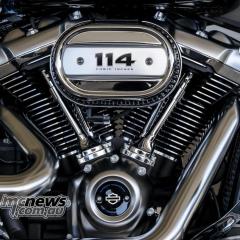


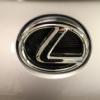

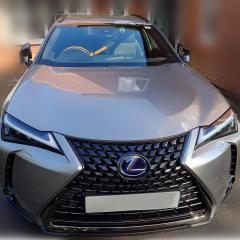
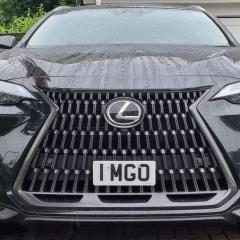
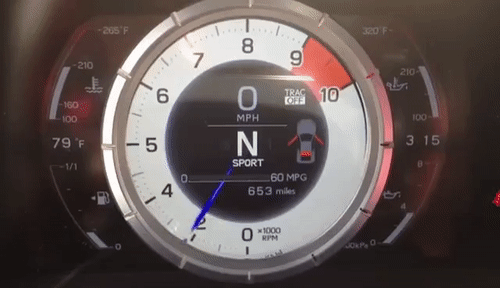

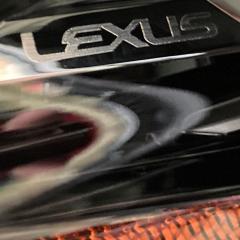
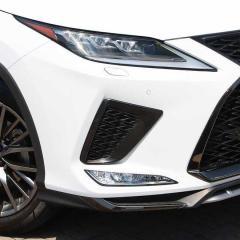



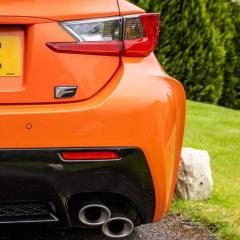

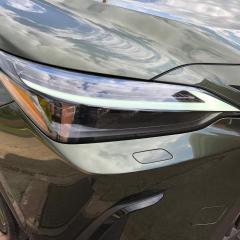

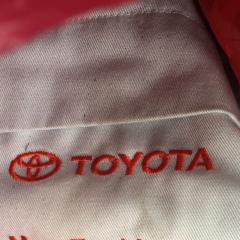


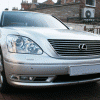
.thumb.jpg.4dea38158ca384b8a4387b97e6a04d02.jpg)